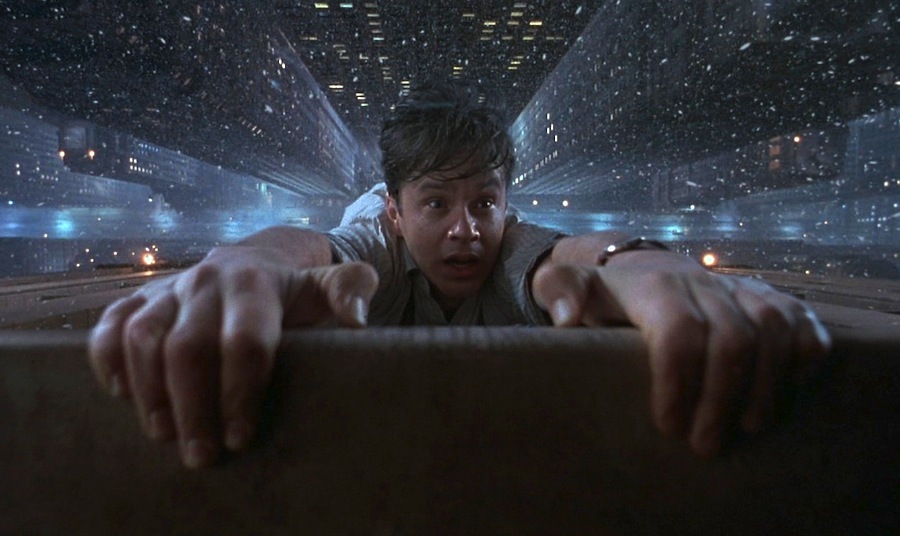Directed by Joel Coen. Written by Ethan Coen, Joel Coen & Sam Raimi
The Hudsucker Proxy one of the lesser-regarded movies from Joel and Ethan Coen. An ambitious romp with a large-ish budget, it was also a major flop for them.
But what a flop.
In a body of work which encompasses Blood Simple, Raising Arizona, Miller’s Crossing, Barton Fink, Fargo, The Big Lebowski, and No Country for Old Men, The Hudsucker Proxy stands out as one of my favorites, due in no small part to Sam Raimi’s involvement as co-writer. Imagine if the slapstick humor of Evil Dead 2 and Army of Darkness got shoved into Frank Capra’s Meet John Doe. The result would look and sound like The Hudsucker Proxy.
In 1994, I think it was hard for this movie to get a fair hearing. Long before you could watch twenty YouTube reviewers edit side-by-side comparisons to the fast-talking screwballs of the 1930s and 40s, the dialog and pace of Hudsucker struck audiences as weird. That’s because the Coens and Raimi were not so much copying those comedies as parodying them.
Jennifer Jason Leigh is brilliant here not as Rosalind Russell, Katharine Hepburn, or Barbara Stanwyck, but as a pastiche of them. It’s hard to appreciate her comic genius if you haven’t watched your share of Turner Classic Movies. The dialog is mannered—more music than speech. Check out her timing, in the scene immediately preceding the above, where she poses as a “Muncie girl” to get close to Norville Barnes (Tim Robbins), the titular proxy:
Robbins was at his cinematic height in 1994. He starred in Shawshank Redemption the same year and would direct Dead Man Walking the following year. His doofy earnestness is more on the Jimmy Stewart end of the screwball masculinity spectrum than the Clark Gable/Gary Cooper/Cary Grant end. He and Leigh play well together.
Aside from Robbins, Leigh, and an underappreciated Bruce Campbell, the cast is rounded out by John Mahoney, Charles Durning, and the great Paul Newman. But the cast, while pitch perfect, is only part of the art. The production design is glorious, an Ayn Randian vision of American grandeur, with impractical office spaces. Newman’s corner office is implausibly behind a giant art deco clock. Beyond a desk, a ticker-tape machine, and a social realist bas-relief, the cavernous space is empty. This is master DP Roger Deakins’ second collaboration with the Coens. He would go on to realize ten more movies for them. Amid his swooping, miniature-heavy camera work are some clever comic bits, such as the brief overhead shot of the hula hoop which immediately calls back to Barnes’ pitch of the toy. (Apologies for the low quality of this clip!)
I love the way the Coens master filmic storytelling in this montage, which provides a pivot point to the story. No dialog here, just a chiasmic montage set to Aram Khachaturian’s contemporary music.
Sadly, the third act is the movie’s downfall. Barnes’ rise to the top and (literal) fall seem rushed. When you pull out Anna Nicole Smith for a cheap joke, you know you’re foundering. At this point, the gags (swooping dolly shots, hammy voiceovers) start feeling forced, as if they’re trying to compensate for the script’s shortcomings. That just goes to show the screenplay, as Spielberg opined, should be the star of the film. The Hudsucker Proxy starts as a great film, proceeds as a good film, and ends as a “cult classic”—in other words, a movie that could never be a true classic but has intermittent charm.
It’s still worth a look and one of my favorites from the 1990s.

